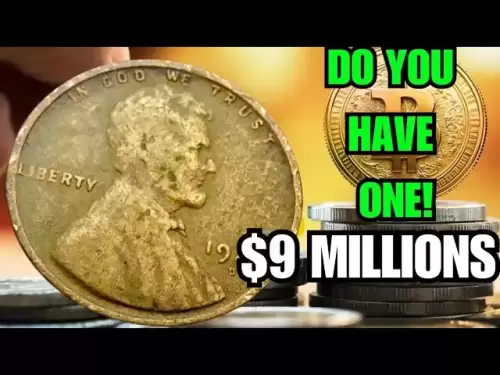-
 Bitcoin
Bitcoin $105,953.9980
3.06% -
 Ethereum
Ethereum $2,445.3292
6.68% -
 Tether USDt
Tether USDt $1.0006
-0.03% -
 XRP
XRP $2.1968
7.03% -
 BNB
BNB $643.2903
2.13% -
 Solana
Solana $144.2799
3.82% -
 USDC
USDC $1.0000
-0.03% -
 TRON
TRON $0.2739
0.49% -
 Dogecoin
Dogecoin $0.1642
4.47% -
 Cardano
Cardano $0.5834
5.49% -
 Hyperliquid
Hyperliquid $38.0741
2.80% -
 Sui
Sui $2.7741
7.56% -
 Chainlink
Chainlink $13.4107
11.26% -
 Bitcoin Cash
Bitcoin Cash $450.4828
-0.61% -
 UNUS SED LEO
UNUS SED LEO $9.1301
0.64% -
 Stellar
Stellar $0.2476
5.49% -
 Avalanche
Avalanche $18.0637
5.09% -
 Toncoin
Toncoin $2.9066
2.43% -
 Shiba Inu
Shiba Inu $0.0...01160
4.01% -
 Hedera
Hedera $0.1527
8.00% -
 Litecoin
Litecoin $84.6122
2.37% -
 Monero
Monero $317.6076
5.76% -
 Ethena USDe
Ethena USDe $1.0008
0.02% -
 Polkadot
Polkadot $3.4519
5.27% -
 Dai
Dai $1.0000
-0.03% -
 Bitget Token
Bitget Token $4.2835
5.62% -
 Uniswap
Uniswap $7.0443
9.78% -
 Pepe
Pepe $0.0...09964
7.41% -
 Pi
Pi $0.5391
4.64% -
 Aave
Aave $264.1743
11.26%
How to operate when the EMA12 and EMA26 cross but are below the zero axis?
A bullish EMA12 crossover above EMA26 below zero may signal a short-term bounce, but confirmation from RSI, volume, and price action is crucial in crypto's volatile environment.
Jun 24, 2025 at 10:00 pm
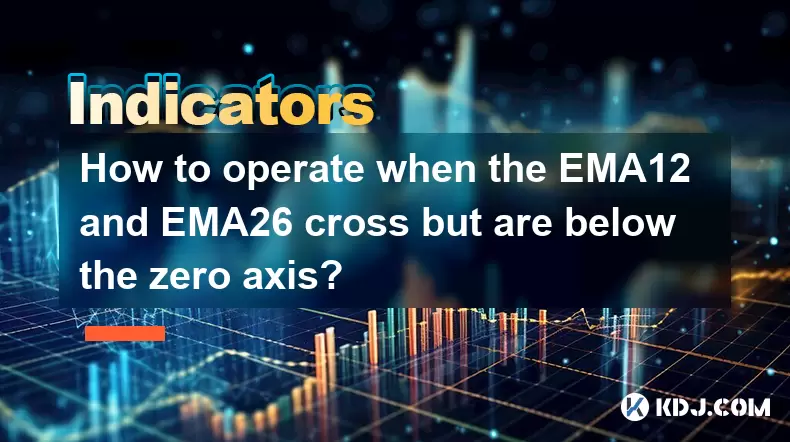
Understanding the EMA12 and EMA26 Crossover Signal
When trading in the cryptocurrency market, technical indicators such as Exponential Moving Averages (EMAs) are widely used to identify potential trend reversals or continuations. The EMA12 and EMA26 crossover strategy is a popular method among traders, especially when combined with other momentum indicators like MACD. However, when this crossover occurs while both EMAs are below the zero axis, it presents a unique trading scenario.
A crossover below the zero line typically signals that the short-term momentum (EMA12) has shifted relative to the longer-term momentum (EMA26), but since both are negative, the overall trend remains bearish. This means that even though a crossover may suggest a short-term bullish shift, the broader context remains weak.
Important Note:
In crypto markets, which are highly volatile and often influenced by macro events, a simple EMA crossover without additional confirmation can lead to misleading signals.Identifying the Type of Crossover Below Zero
There are two types of crossovers: bullish (golden cross) and bearish (death cross). When the EMA12 crosses above the EMA26 below the zero axis, it's considered a potential bullish reversal signal. Conversely, if the EMA12 crosses below the EMA26 below zero, it reinforces the ongoing downtrend.
In the context of crypto trading, identifying whether the crossover is bullish or bearish becomes crucial. Traders must not only look at the crossover itself but also analyze its position relative to the zero line, price action, and volume.
- Bullish crossover below zero: EMA12 crosses above EMA26, suggesting a possible pullback or short-term bounce.
- Bearish crossover below zero: EMA12 crosses below EMA26, reinforcing the downtrend and potentially signaling further decline.
This distinction is essential because acting on a bullish crossover in a strong downtrend without confirmation can result in losses.
Analyzing Market Context Before Taking Action
Before making any trade decision based on an EMA12 and EMA26 crossover below the zero axis, it’s vital to assess the broader market environment. Crypto markets are known for their volatility and rapid shifts in sentiment. Therefore, understanding whether the asset you're analyzing is in a consolidation phase, a trending phase, or experiencing news-driven movement is critical.
- Check the RSI: If the Relative Strength Index (RSI) is below 30, the asset might be oversold, increasing the probability of a bounce.
- Evaluate support/resistance levels: Are there key price zones nearby that could trigger a reversal?
- Monitor volume: A surge in volume during the crossover can indicate genuine buying interest rather than a false signal.
Failure to incorporate these factors may lead to premature entries or incorrect assumptions about market direction.
Setting Up a Trade Based on the Crossover
If you've confirmed that the crossover is bullish and supported by other indicators, you can consider entering a long position. However, due to the fact that both EMAs are still below the zero line, it’s wise to treat this as a short-term opportunity rather than a long-term reversal.
Here’s how to set up the trade:
- Entry Point: Enter after the candle closes above the EMA26 following the crossover.
- Stop Loss: Place it just below the recent swing low to protect against further downside.
- Take Profit: Set initial target at the nearest resistance level or use a risk-reward ratio of at least 1:2.
Alternatively, if the crossover is bearish and confirms further weakness, you may consider a short position, especially if the price is hitting resistance or breaking down from a consolidation zone.
Managing Risk During Low Momentum Conditions
Trading during periods where both EMAs are below zero means you're operating in a low momentum environment. In such conditions, price movements tend to be erratic and less predictable. Therefore, proper risk management becomes even more important.
- Reduce position size: Since the trend is still bearish, allocate a smaller portion of your portfolio to the trade.
- Use tight stop losses: Given the lack of strong directional bias, wide stops can expose you to unnecessary losses.
- Avoid over-leveraging: Especially in crypto futures trading, high leverage can amplify losses quickly.
Also, keep a close eye on market news and announcements, as unexpected developments can cause sharp moves that may trigger stop losses prematurely.
Frequently Asked Questions
Q: Can I use EMA12 and EMA26 crossovers alone for trading decisions?
While EMA crossovers provide useful signals, relying solely on them—especially in volatile crypto markets—can be risky. It's recommended to combine them with other tools like RSI, MACD, and volume analysis for better accuracy.
Q: What time frame is best for monitoring EMA12 and EMA26 crossovers?
The effectiveness of EMA crossovers varies across time frames. For intraday traders, the 1-hour or 4-hour chart is commonly used, while swing traders prefer the daily chart for more reliable signals.
Q: Should I ignore all bullish crossovers below the zero axis?
Not necessarily. Bullish crossovers below zero can indicate short-term bounces or corrections, but they rarely signify a full trend reversal. Use them cautiously and always check for confluence with other indicators.
Q: How do I differentiate between a fakeout and a real crossover signal?
A real crossover usually comes with increased volume and price confirmation. Fakeouts often occur with little volume and quick reversals. Always wait for the next candle to confirm the move before entering a trade.
Disclaimer:info@kdj.com
The information provided is not trading advice. kdj.com does not assume any responsibility for any investments made based on the information provided in this article. Cryptocurrencies are highly volatile and it is highly recommended that you invest with caution after thorough research!
If you believe that the content used on this website infringes your copyright, please contact us immediately (info@kdj.com) and we will delete it promptly.
- Cryptocurrencies: Chart-Breaking Buys Beyond the Hype
- 2025-06-25 04:45:12
- Navigating Crypto Volatility: UNI Price, SUI Token, and the Rise of Unstaked
- 2025-06-25 04:45:12
- Bitcoin, Ethereum, and Geopolitical Tensions: Navigating the Iran-Israel Ceasefire
- 2025-06-25 05:05:13
- JPMorgan, Blockchain, and JPMD Token: A Quantum Leap for On-Chain Finance?
- 2025-06-25 05:05:13
- Bitcoin Desktop Wallets in 2025: A New Yorker's Take
- 2025-06-25 04:25:13
- Coinbase Stock Jumps: Decoding the Reasons Behind the Surge
- 2025-06-25 04:25:13
Related knowledge
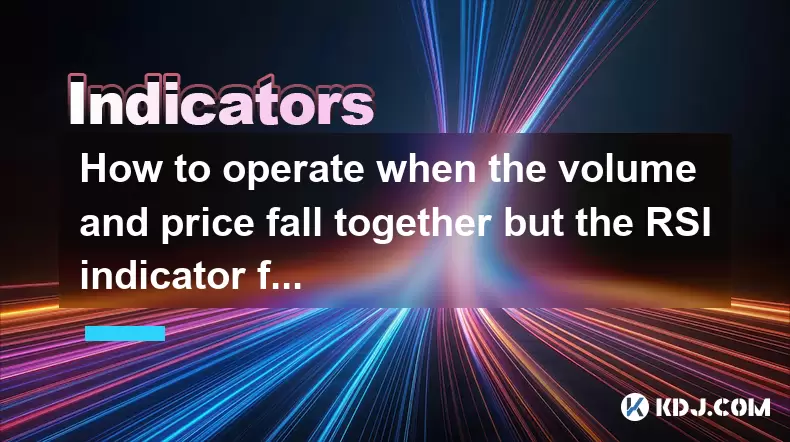
How to operate when the volume and price fall together but the RSI indicator forms a bottom divergence?
Jun 25,2025 at 04:29am
Understanding the Concept of RSI Bottom DivergenceWhen analyzing cryptocurrency price charts, traders often rely on technical indicators to spot potential reversals. One such signal is a bottom divergence in the Relative Strength Index (RSI). This occurs when the price makes a new low, but the RSI does not confirm that low and instead forms a higher low...
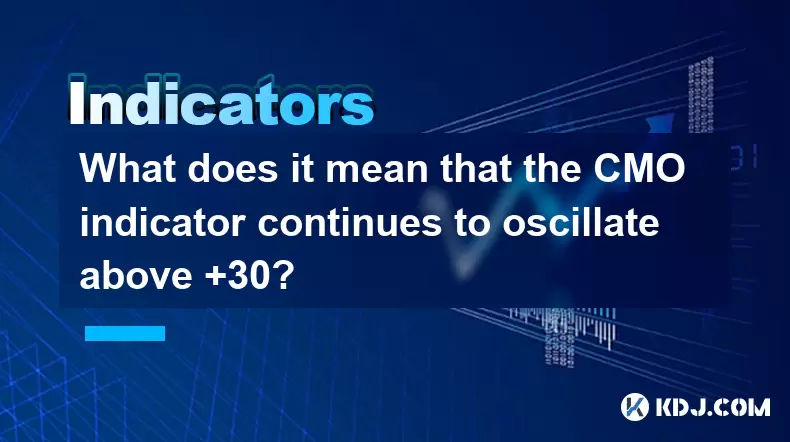
What does it mean that the CMO indicator continues to oscillate above +30?
Jun 25,2025 at 03:29am
Understanding the CMO IndicatorThe Chande Momentum Oscillator (CMO) is a technical analysis tool developed by Tushar Chande to measure momentum in financial markets. In cryptocurrency trading, the CMO helps traders identify overbought or oversold conditions and potential trend reversals. The oscillator ranges from -100 to +100, with values above zero in...

What does it mean that the ATR indicator suddenly doubles after hitting a new low this year?
Jun 24,2025 at 11:57pm
Understanding the ATR IndicatorThe Average True Range (ATR) is a technical analysis indicator used to measure market volatility. Developed by J. Welles Wilder, ATR calculates the average price range between a security’s high and low over a specific period—typically 14 periods. It does not indicate the direction of price movement but rather how volatile ...
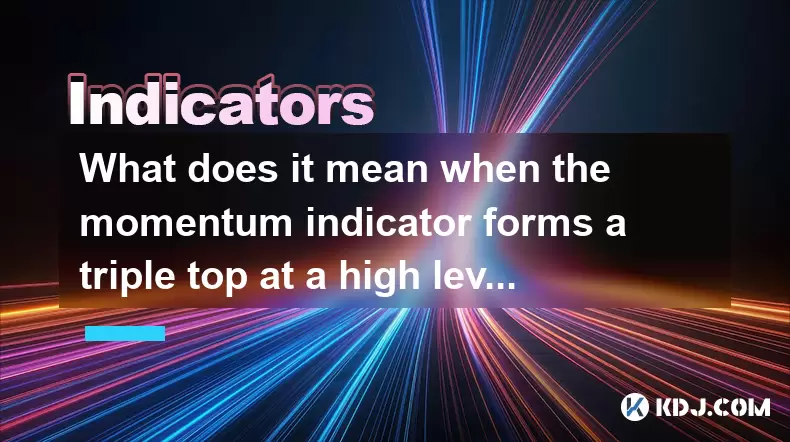
What does it mean when the momentum indicator forms a triple top at a high level?
Jun 25,2025 at 03:15am
Understanding the Momentum Indicator in Cryptocurrency TradingThe momentum indicator is a widely used technical analysis tool that measures the rate of change in price movements over a specified period. In cryptocurrency trading, where volatility is high and trends can reverse rapidly, this indicator helps traders identify potential trend reversals or c...
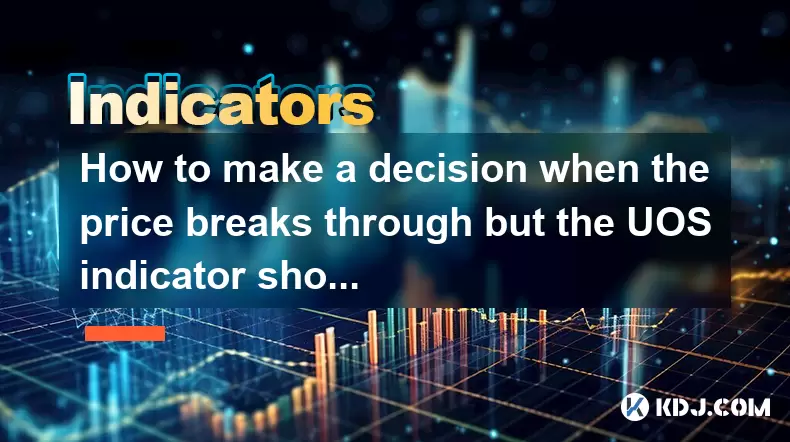
How to make a decision when the price breaks through but the UOS indicator shows a top divergence?
Jun 24,2025 at 11:42pm
Understanding the UOS Indicator and Price BreakthroughsThe Ultimate Oscillator (UOS) is a momentum oscillator that combines multiple timeframes to provide a more accurate picture of market momentum. When traders observe a price breakthrough — where the price moves above a key resistance level — but the UOS indicator shows a top divergence, it creates a ...

How to interpret the stochastic indicator being blunted for 5 consecutive days in the overbought area?
Jun 25,2025 at 03:00am
Understanding the Stochastic Indicator in Cryptocurrency TradingThe stochastic indicator is a momentum oscillator widely used in technical analysis within the cryptocurrency market. It helps traders identify overbought and oversold conditions by comparing a particular closing price of an asset to a range of its prices over a certain period. The standard...

How to operate when the volume and price fall together but the RSI indicator forms a bottom divergence?
Jun 25,2025 at 04:29am
Understanding the Concept of RSI Bottom DivergenceWhen analyzing cryptocurrency price charts, traders often rely on technical indicators to spot potential reversals. One such signal is a bottom divergence in the Relative Strength Index (RSI). This occurs when the price makes a new low, but the RSI does not confirm that low and instead forms a higher low...

What does it mean that the CMO indicator continues to oscillate above +30?
Jun 25,2025 at 03:29am
Understanding the CMO IndicatorThe Chande Momentum Oscillator (CMO) is a technical analysis tool developed by Tushar Chande to measure momentum in financial markets. In cryptocurrency trading, the CMO helps traders identify overbought or oversold conditions and potential trend reversals. The oscillator ranges from -100 to +100, with values above zero in...

What does it mean that the ATR indicator suddenly doubles after hitting a new low this year?
Jun 24,2025 at 11:57pm
Understanding the ATR IndicatorThe Average True Range (ATR) is a technical analysis indicator used to measure market volatility. Developed by J. Welles Wilder, ATR calculates the average price range between a security’s high and low over a specific period—typically 14 periods. It does not indicate the direction of price movement but rather how volatile ...

What does it mean when the momentum indicator forms a triple top at a high level?
Jun 25,2025 at 03:15am
Understanding the Momentum Indicator in Cryptocurrency TradingThe momentum indicator is a widely used technical analysis tool that measures the rate of change in price movements over a specified period. In cryptocurrency trading, where volatility is high and trends can reverse rapidly, this indicator helps traders identify potential trend reversals or c...

How to make a decision when the price breaks through but the UOS indicator shows a top divergence?
Jun 24,2025 at 11:42pm
Understanding the UOS Indicator and Price BreakthroughsThe Ultimate Oscillator (UOS) is a momentum oscillator that combines multiple timeframes to provide a more accurate picture of market momentum. When traders observe a price breakthrough — where the price moves above a key resistance level — but the UOS indicator shows a top divergence, it creates a ...

How to interpret the stochastic indicator being blunted for 5 consecutive days in the overbought area?
Jun 25,2025 at 03:00am
Understanding the Stochastic Indicator in Cryptocurrency TradingThe stochastic indicator is a momentum oscillator widely used in technical analysis within the cryptocurrency market. It helps traders identify overbought and oversold conditions by comparing a particular closing price of an asset to a range of its prices over a certain period. The standard...
See all articles

























